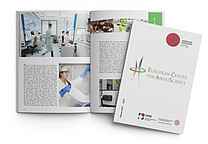Sie befinden sich hier
Inhalt
Pathological alterations of blood vessels are directly or indirectly responsible the majority of human mortality in the Western world. Vascular dysfunction is, among others, causally involved in cardiac ischemia, stroke, cancer and diabetes, just to list some of the frequent and most devastating causes of human disease. The key critical role of vascular dysfunction for human health and disease calls for intensified and more concerted vascular-focused research, whose basic science discoveries and advances can serve as pipeline for translational and clinical research aimed at developing more sensitive diagnostic procedures for the early detection of patients at risk as well as new and effective therapies. Current research and therapy approaches focus on the diseased end organ including the ischemic heart after infarction or the injured brain following stroke. In contrast to these classical approaches, ECAS follows completely new avenues by shedding light on the function and instructive regulatory roles of blood vessels focusing on cells of the vessel wall (endothelial cells, pericytes, smooth muscle cells) as well as cells of the vessel microenvironment. Moreover, ECAS integrates other emerging and in need research areas such as aging and metabolism into state-of-the-art angioscience research.
ECAS is structured in a modular and integrative manner following organ-system and disease-related research fields. The innovative research concept of ECAS incorporates the following research fields: Basic Angioscience, Translational Angioscience and Precision Angioscience.
Research Areas
Kontextspalte
European Center for Angioscience
Medical Faculty Mannheim
Heidelberg University
Ludolf-Krehl-Straße 13-17
68167 Mannheim




